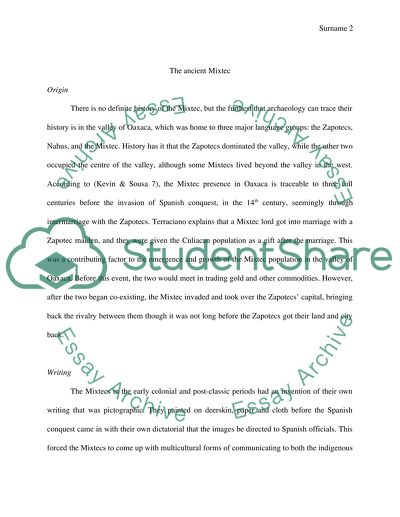Cite this document
(“The Mixtec Culture Essay Example | Topics and Well Written Essays - 2500 words”, n.d.)
Retrieved de https://studentshare.org/anthropology/1495923-the-mixtec-culture
Retrieved de https://studentshare.org/anthropology/1495923-the-mixtec-culture
(The Mixtec Culture Essay Example | Topics and Well Written Essays - 2500 Words)
https://studentshare.org/anthropology/1495923-the-mixtec-culture.
https://studentshare.org/anthropology/1495923-the-mixtec-culture.
“The Mixtec Culture Essay Example | Topics and Well Written Essays - 2500 Words”, n.d. https://studentshare.org/anthropology/1495923-the-mixtec-culture.


